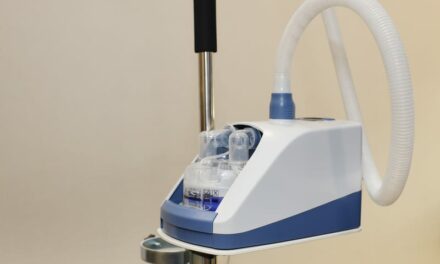By Ken Hable, MD, BSRT
Imagine you buy a brand new car and you love it. Then, a few years later, it has some issues. That’s when you find out the only place you’re allowed to take it for repairs is the dealership where you bought it.
Worse yet, you also get the unpleasant surprise of learning the company that manufactured the car is insisting you upgrade to the newest model even though the one you have will work fine with minor repairs, and you don’t need a new vehicle.
It sounds a little strange, but that’s what’s happening to some healthcare organizations that invest in expensive medical imaging equipment, only to find out they must jump through hoops to get the information needed to service and maintain that equipment in-house.
Every medical imaging device manufacturer uses service keys, passcodes or an access device like a USB key, which, when provided to equipment owners, allows engineers to access software used for system diagnostics, calibration, and error reporting. Yet, each OEM approaches accessibility to service keys differently. This causes confusion, frustration, and increased costs for healthcare organizations, all of which are unnecessary.
On the more lenient side of the spectrum, you have OEMs that will give out service keys and provide broad access to families of systems and different modalities. This makes it easier for in-house engineers to troubleshoot equipment failures and make repairs after an OEM service contract ends
In the middle, there are OEMs that are a bit stricter. They may have a vetting process or require engineers to get certain training and certification to earn service keys. But once they have the passcodes, the engineers are not limited in terms of access.
Finally, there are the ultra-rigid medical imaging device manufacturers. These OEMs want you to prove you qualify by first paying for their exclusive training to get a service key. When you get one, it will be for a very specific piece of equipment, and access is often limited to certain parts of the software. Plus, the service key has an expiration date. It may expire in one day or one year, whatever the OEM provides. And once expired, you’ll need to request a new one; thus the cycle repeats.
Service Key Access and HTM
Obviously, the OEMs that restrict access to service keys can cause headaches for engineers who are trying to troubleshoot issues with medical imaging systems. Our tech support specialists often run into this roadblock while trying to assist them.
The caller will describe what’s happening, and support will ask what error codes they’re getting. But, the engineer has no service key and, thus, no error codes to report. Unless there’s a very telltale sign of a common issue, there’s not much either of us can do until the key is obtained.
Let’s go back to the new car example from the start of this article.
How frustrated would you be if you had a reliable local mechanic who could fix your vehicle at a better price, but you weren’t allowed to take it to him? Worse yet, what if you had the skills and tools to fix the car yourself, but you weren’t allowed to touch the engine without getting special permission from the car manufacturer?
It’s your car. You paid for it. Shouldn’t you have the right to decide how to service and repair it?
Requiring OEM training is another problem. It’s like saying there’s only one medical school in the nation that can produce licensed doctors. There are many philosophies to practicing medicine, and the details of the educational experience will differ from school to school. I personally attended a nontraditional program, but I still had the ability to go into residency and get licensed. I have the same rights as someone who went to any other medical school.
On top of limiting access to service keys, some OEMs try to push healthcare facilities towards purchasing newer models. But, who’s to say that device has truly reached the end of its life? If it’s still operational, safe and providing value, why shouldn’t an in-house team continue maintaining it?
Service Key Access and OEMs
As you might expect, a lot of it boils down to money. Some OEMs will claim they’re trying to protect proprietary information or the integrity of their brand, but I believe limiting access to medical imaging service software is more likely to hurt the brand.
When a healthcare organization purchases a million-dollar medical imaging device with a three-year OEM service contract, they likely assume in-house engineers can take over service and repairs at the start of year four. But, there are OEMs who don’t want to lose revenue from that service contract. So, their solution is to make it increasingly difficult for anybody but their own people to service and repair the systems.
The problem is, this leaves a horrible taste in the customers’ mouths. If people in the organization know there are more affordable ways to obtain replacement parts or service the equipment, but limited access to service software makes that arduous, they will look elsewhere when it’s time for new medical imaging devices.
The OEM may have high-quality equipment, but if it creates problems and increases downtime due to red tape, it could be viewed as a thorn in the side. The sooner the organization puts out an RFP for new equipment, the sooner that machine is out the door. Other OEMs know this is a pain point in healthcare tech, and their sales reps will use it to gain a competitive edge.
What all OEMs need to realize is that the people who service and support older medical imaging devices are also acting as champions for the OEM’s brands. They’re talking up the quality and helping that equipment extend its usefulness. While this may delay the purchase of new equipment, it helps ensure the OEM that’s already in the facility stays the preferred option.
What’s happening in healthcare tech right now is reminiscent of the way consumers jump between cable and satellite TV providers. As their bills slowly creep up, they switch to a competitor to get a better rate. A year or two later, it happens again. Likewise, healthcare organizations will shift OEM loyalty based on where they feel they’ll get the greatest return on a significant investment.
Isn’t customer satisfaction a better retention strategy? Shouldn’t knowledgeable medical imaging engineers be allowed to do their jobs? Don’t equipment owners have certain rights?
If you believe the answer to all those questions is yes, and you want to do something about it, you may want to connect with the Associations for the Advancement of Medical Instrumentation (AAMI). This nonprofit organization is working to ensure there are fair and transparent policies in place that support healthcare organizations in containing costs and improving patient care.
AAMI is actively involved in the debate surrounding medical imaging service standards as well as the information OEMs are required to provide to healthcare technology management and third-party service organizations. You can stay in the know and make your voice heard by considering an AAMI membership.
Ken Hable is director of engineering and training for Siemens OEM imaging replacement parts, services, and training provider Technical Prospects. Questions and comments can be directed to [email protected].







One might want to also try to better influence the purchasing process so that cooperative manufacturers get the business and uncooperative ones do not. The best time to get what you want is before the check is written.
It is about the money. It is always about the money.
AAMI has proven it is about the money. Since they started accepting sponsorships from the manufactures, they have been less likely to stand up to these companies on behalf of the group of people who supported AAMI for years. This is clearly demonstrated in the watered down EQ56 standards from the original 1999 release. In the 1999 version there was a section as to what we can expect from manufactures. The EQ56 2013 has no mention about what manufactures should provide. I was told that the manufactures had representative on the board as the new EQ56 standards were being revised. They call this the “fox watching the hen house”. It does not end well for the hens!
CMS/TJC/NFPA 99 – The law (CMS) and regulations (TJC) adopted NFPA 99 2012 standards in January of 2017. So, from that moment on, Healthcare Providers that accept Medicare payments must abide by the NFPA 99 book. Part of this book, 10.5.3.1.1, identifies the 13 components of the documents that the manufacture shall furnish. Well this has proven to be difficult. The manufactures tell us: they don’t have manuals; they only provide them once we pay for training (if they offer training for in-house Biomedical Departments); they state the manuals contain proprietary information and can’t be shared; or they share a watered down version that does not provide the complete maintenance procedures. These documents are copy written and their technology is typically under a patent. These procedures are needed to hold the OEM accountable to do the schedule maintenance. We have to be aware of what they are required to do as we hire them to support the equipment with OEM service contracts.
These service restrictions are not new. It is my impression that many of these barriers represent a Service Monopoly from a Sales Monopoly, therefore violating the Sherman Anti-Trust Act and the Clayton Act. We have seen efforts to support the digital right to repair, but these hit walls. Congress listened to the Manufactures represented by META to challenge the ability for ISO’s, and potentially In-House Biomed, to become FDA or ISO certified. The recent FDA Report published in May 2018 properly came to the conclusion, at least at this time, that the non-OEM service providers were able to safely service medical equipment. While the comment that “people who are not properly trained should not service equipment” appears to be a sound and reasonable one, there was no questions back as to if the OEM’s offered training to non-employees of the OEM – or if it was appropriately priced. We see the training priced so high, that ROI’s are difficult to support servicing in house. It is about the money within the hospitals as well.
However, we still will require support from the OEM. There have been reports that the cost of service of medical equipment will rise as much at 27% in the next 5 years. Remember, it is about the money. Other reports have stated that as much as 7 time more income to OEM comes from the service side compared to the original device sales side.
This is a war. We on the Healthcare side are seeing many battles being lost. The OEM’s are working to protect their income streams. They are not held to compliance with the CMS/TJC/NFPA, the Healthcare organization is. OEM’s are accountable to the FDA, who has not addressed any requirements for service documentation since the late 1960’s when the AIAT accommodations were placed in the CFR. Don’t know what AIAT is … look it up.
We have to unite. We need CMS and the FDA to reconcile the rules so we as In-House service are not the ones stuck between a rock and a hard place. I do not anticipate that AAMI will be a voice for the In-House programs.